IDEA Pedagogy
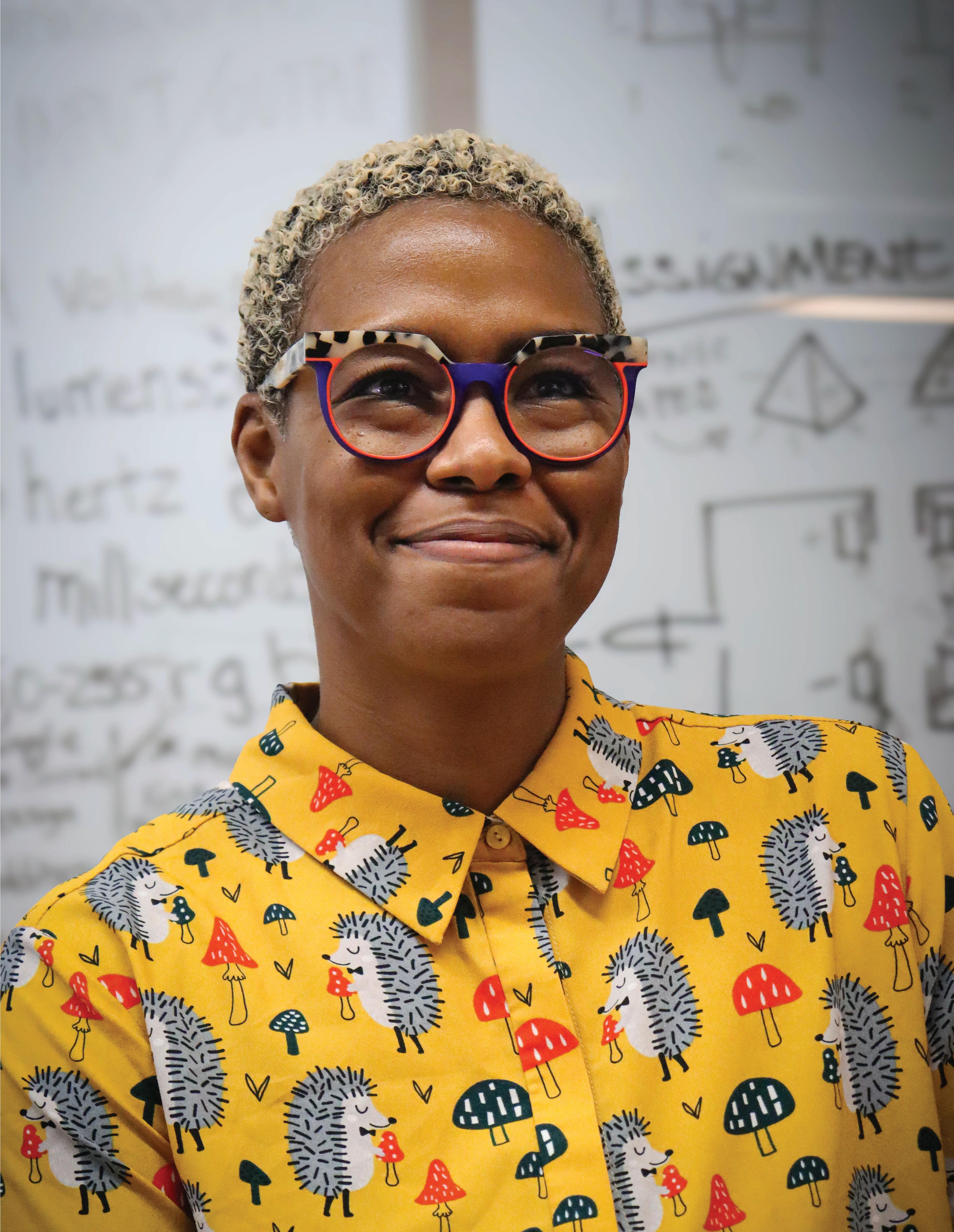




by IOANA A. RACU, ‘24
Professor Raja Schaar joined Drexel University’s Antoinette Westphal College of Media Arts and Design in 2016, where she is now Associate Professor of Product Design. Through implementing interdisciplinarity and transdisciplinarity in her pedagogy, Professor Schaar’s main focus is to introduce her students to environments that will help them understand their future professional workplaces and the complex dynamics within them. Immediately upon joining Drexel, Professor Schaar collaborated with Assistant Professor of Dance Valerie Ifill on “Black Girls STEAMing Through Dance,” an afterschool program intersecting art and STEM skills to inspire Black girls to get involved in the industrial design field while using technologies like Augmented and Virtual Reality.
“I mainly focus on ways that design can make the world better for people, but through the lenses of equity, inclusion, and ethics, and then that overlaps with some intersectional issues, including education, health, and the environment.”
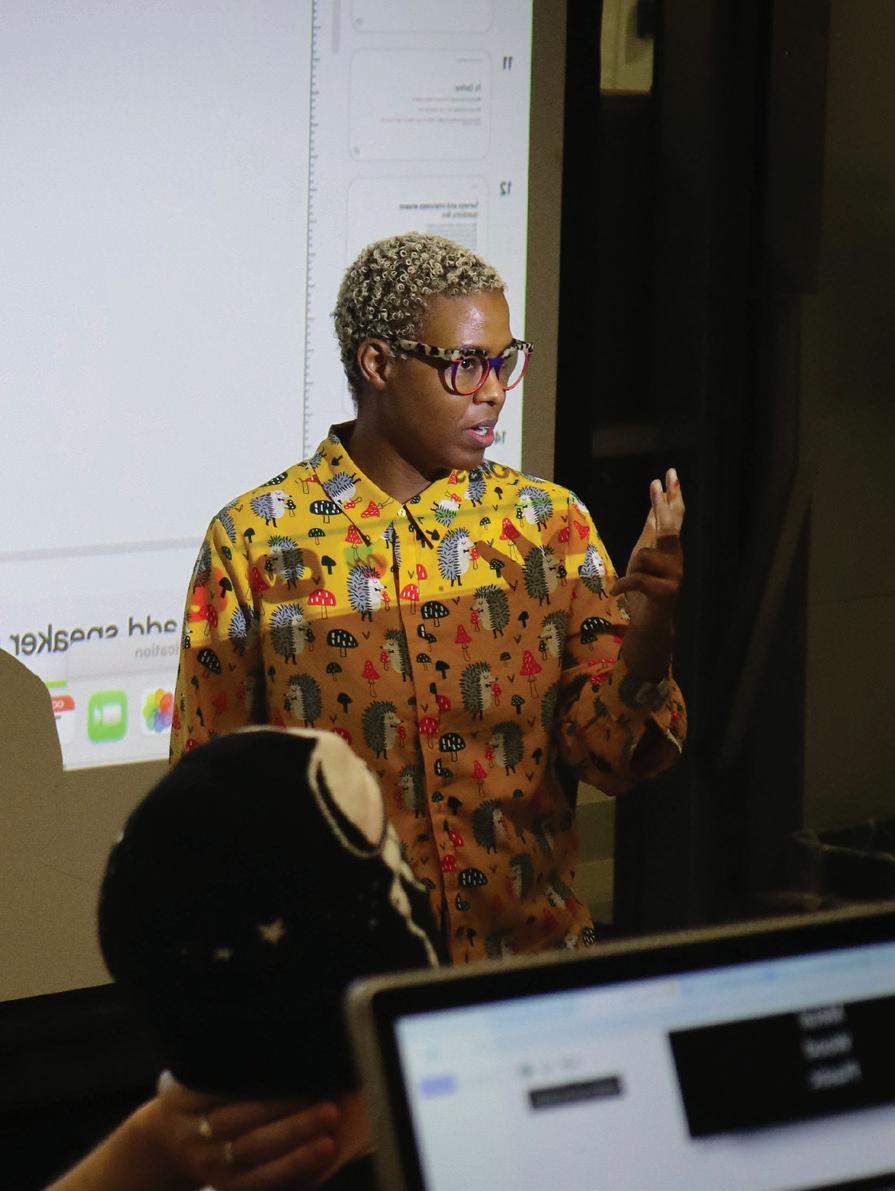
-Professor Raja Schaar

The program aims to teach students from Philadelphia middle schools about exercising their agency — they choreograph their own performances and learn how to design and code. Expanding classic STEM and STEAM education is at the forefront of Professor Schaar’s pedagogical style. Design should strive to be harmless to the planet, to our neighbors, those closest to us as well as those we will never meet. In her project “Empowering Students to Lead Climate Resilient Change,” Professor Schaar addresses questions that often go against the capitalistic nature of the industrial design field. Rather than prioritizing profit, she challenges students to analyze the effects of the destructive practices that lead to environmental racism — such as the location of manufacturing facilities in the United States and the global South. Highlighting the immediate need for diversity as shown in this research project translates into applied practices within her classes.
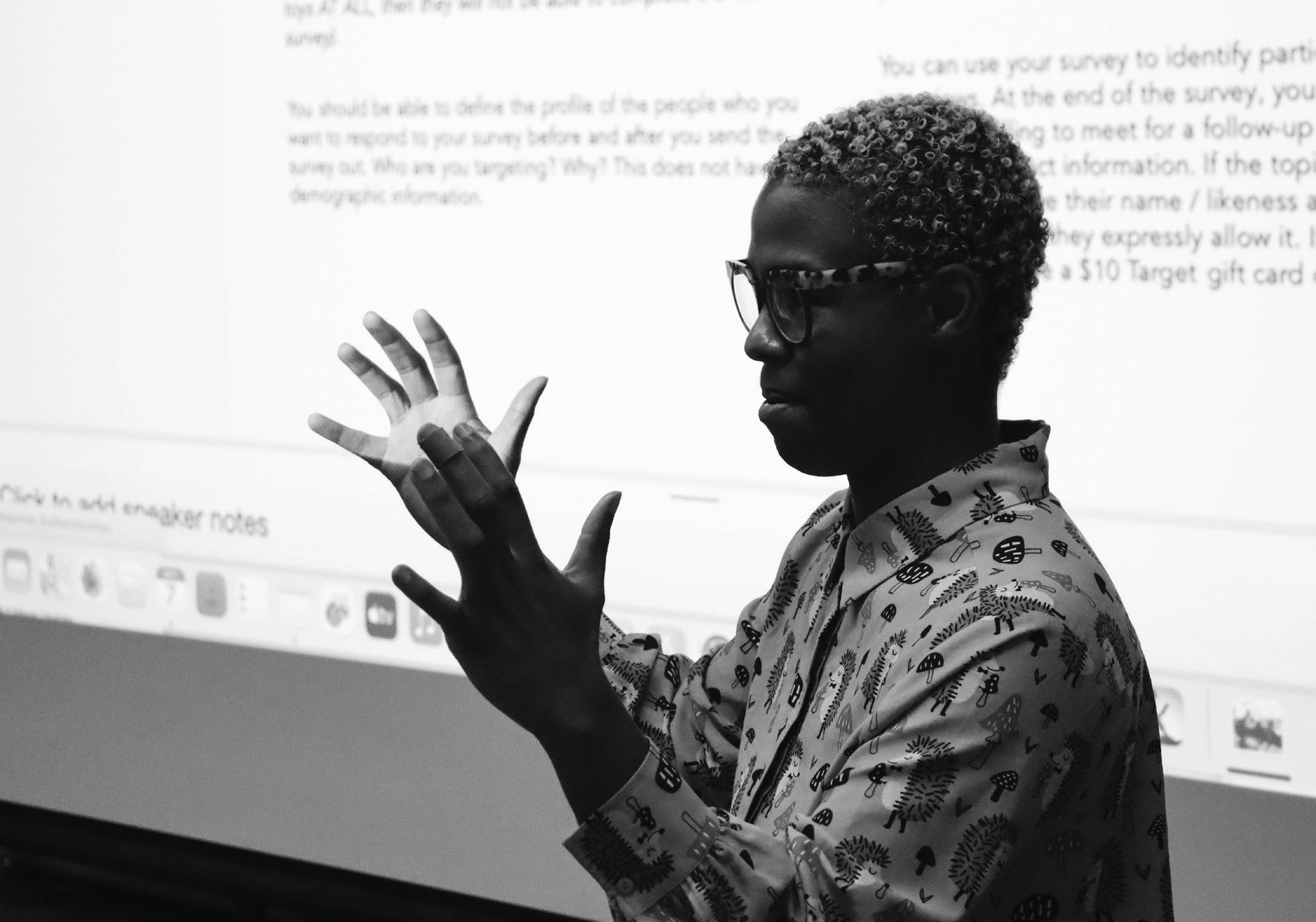
“There's
so many educational spaces that now as an adult,
I understand that, you
can do educational stuff in so many environments
other than school.”
Professor Schaar’s journey to teaching started with her position as an exhibition designer at the Science Museum in Atlanta. After that position, she designed programs for others to teach in the education department at the High Museum in Atlanta. It was alternative teaching spaces that fueled the beginning of Professor Schaar’s love for educational environments.
Unconventional interactive educational experiences for kids attracted her the most. She has been crafting to a community-based learning style since the beginning — working as a workshop instructor and helping out at summer camps.
She quickly understood how to create and draft salient educational pillars: lesson plans, advertising programs, and recruitment for community-based programs. She came to Drexel in 2016 and has been applying all of the practices that have influenced environments where she was able to be an educator. From the young Georgia Tech graduate who never saw herself teaching, to the professor whose mission is to create spaces that foster new and innovative ideas, Professor Raja Schaar has successfully combined her love for unconventional methods with community-driven collaboration.
“I grew up in a family of educators. When I started college, I had zero desire to ever teach, ever, only because it just seemed hard. Having babysat kids, it was a lot of work.”
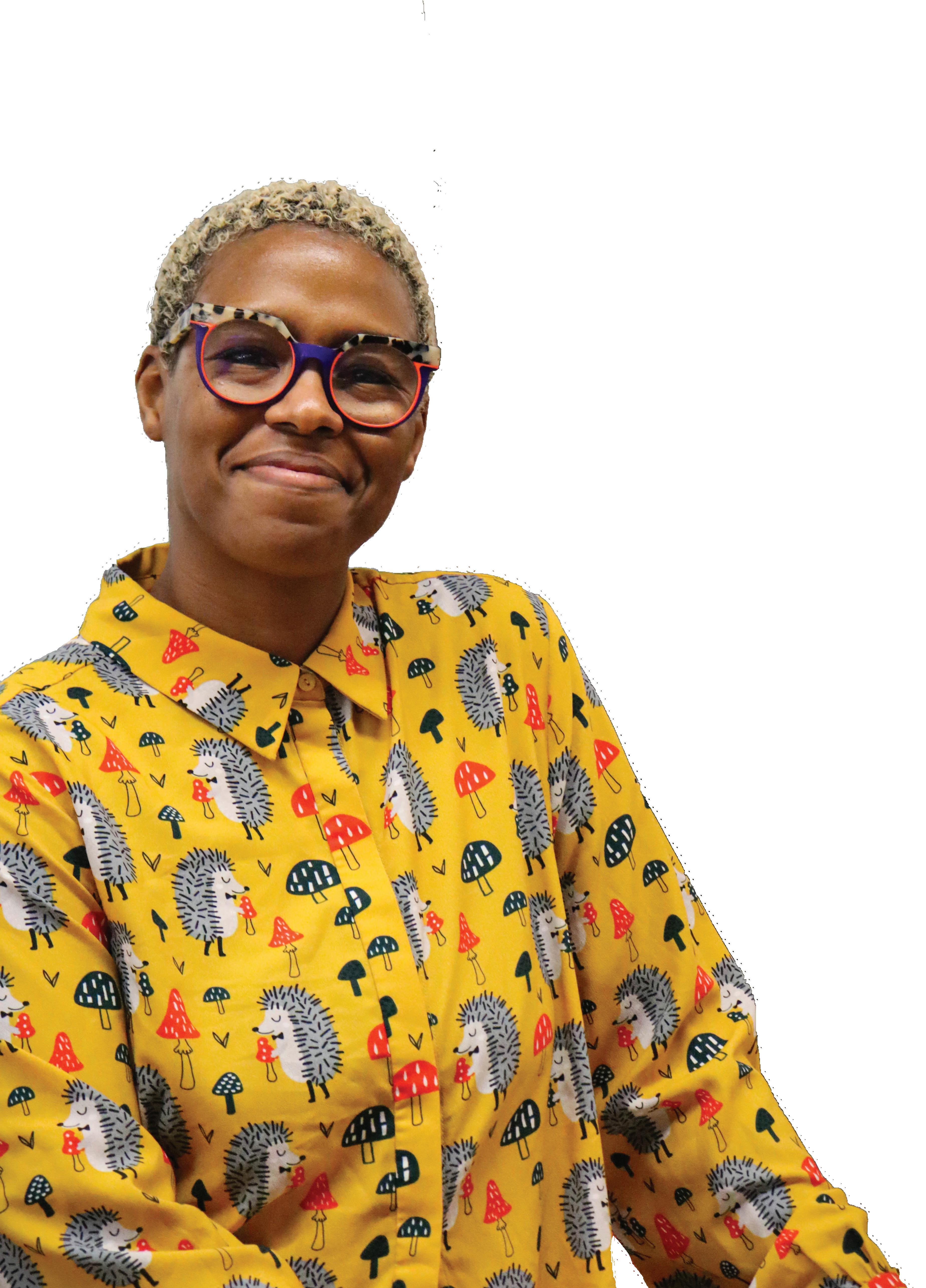
“My goal is always for students to partner with an outside entity on a project. It’s always ideal that students do work for someone that helps the community or helps a broader mission so they can solve real-world problems. (...) The real world moves at a certain pace, so how do they make their project relevant for other people, which is what the real world is, right?”
Bring Outside Partners Inside Westphal Connections to the real world lead to solving real-world problems. Most of Professor Schaar’s projects are connected to either a museum, a community organization, or a company. In Fall 2023, she helped students work on projects with an industrial design firm and a local regenerative sheep farm. Constraints are driven by real-world people, so she coaches students on how to make their projects relevant for other people, and mirror the type of discussions they would have in their daily professional lives.
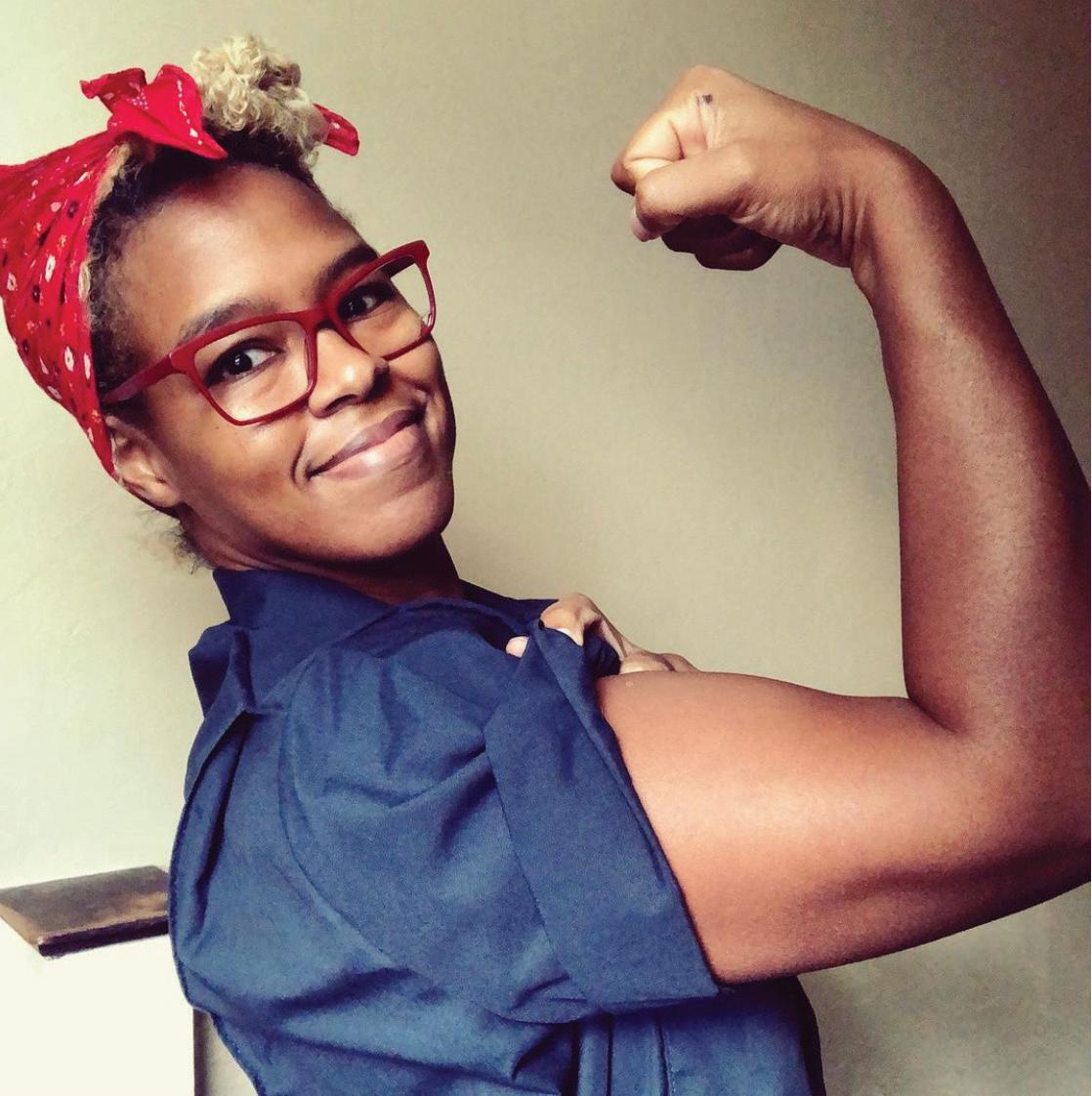
“I still think back on things that my professor said — the analogy they gave me that I didn't get, or some metaphor that didn't land, or I missed a vocabulary term, and they kept saying this word, but it means nothing to me. But the minute it comes into focus and then I'm like, ‘Oh, okay, okay, okay. I'm gonna go out and use analogies and metaphors that maybe did not make sense to students. I'm gonna try and now I see what they're trying to do’. But I do think that that's what teaching is. It's figuring out how so many people understand things from so many different vantage points.”
Embrace Over Explaining Decolonizing education starts with decentering the idea that absolute knowledge is only held by the professor. Professor Schaar loves explaining hard concepts in technical skill classes — teaching software and how to wire code are amongst her favorites. Hard things can easily look simple in a classroom where the learning is reciprocal. If students truly understand the material, they will be more confident to learn it and take part in discussions in and outside of the classroom.
“We really tried to make sure, at least within our classrooms, students feel like they belong. So they have that confidence once they leave school. And they know that they have the skills that are on the same playing field as some of the toxic white guys that are out there, they're going to be questioning their skills. And that's something that I think as a faculty we've really tried to do.”
Designing for Social Justice is Ethical and Sustainable Design Design does not happen in a vacuum. When students leave the classroom, they should understand the deeper implications and effects of design in a larger context. Open discussions, from sustainability to design ethics, are what makes this field much more tangible altogether.
“I think sometimes it takes one good teacher to teach you like a backhoe — to break down more complex problems. It comes down from my own learning as a student, and things that were confusing to me in school. I feel like even if I don’t understand it, but if I figure out how to break it, this is how I’m going to teach; it’s going to be much simpler for them.”
Gender imbalance is one of the primary issues in the product/industrial design field. While the popularity and simple awareness of the program have grown over the years, Professor Schaar believes that the disparities between the 50:50 Drexel enrollment and the 16:84 industry numbers require constant support systems for students who are innovators in their field. She wants students to know that regardless of their identity or ability status, their skills are on the same playing field as every other student who is considered the historical representative of the field.
The breakthrough of the Internet challenged industry professionals to really examine their practices, and reconsider what it really means to go to a prestigious institution. In the past, design education was all about skills — spending entire semesters learning certain programs because of their intricacies. Now, Professor Schaar tries to focus a lot of her time on explaining the effects of design in the world and how these skills could be harmful if used unethically. Exposure to a diverse community full of pioneering ideas is what college should be about — discussing the nuts and bolts of how applying your education might affect the community around you.


First of all, what really differentiates a designer who's trained by faculty, professionals, whatever, versus someone who isn't?”
Who are we to say that they aren't a designer, right?”
And so, we really have to think about how we make a design education that's worth it, to come to school, but also privileges and takes advantage of access, feedback, people, and these real-world experiences that you can't just get sitting on your laptop on your own, unless you kind of understand how to navigate that.”
If everyone has access to information online, they can just go through a couple of certificates and call themselves a designer.

Dean
Jason Schupbach
Associate Dean
Francis Tanglao Aguas, MFA
Executive Assistant to the Dean and IDEA Programs Administrator
Mysha Harrell
Catalyst Graduate Fellow
Taylor Sheppard
Catalyst Fellows
Monyvathana Ear, Eva Krewson, Berlinda Alfred, Jaida Owens
IDEA/Bridge Assistants
Jibby Ojo, Juan Rodriguez, Promiz Thomas
Volume 1, Issue 1. 2025
Publisher & Editor-in-Chief
Francis Tanglao Aguas
Head Writer
Ioana A. Racu
Copy Editor
Taylor Sheppard
Graphic Designer Monyvathana Ear
Photographer Eva Krewson

Professor Raja Schaar